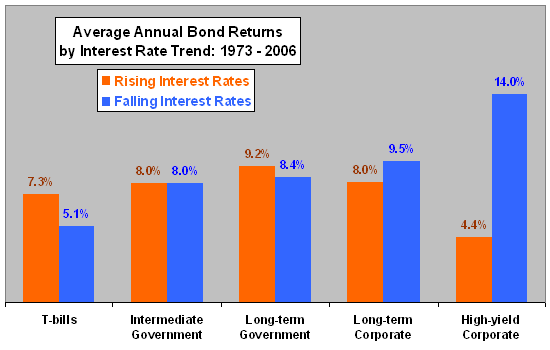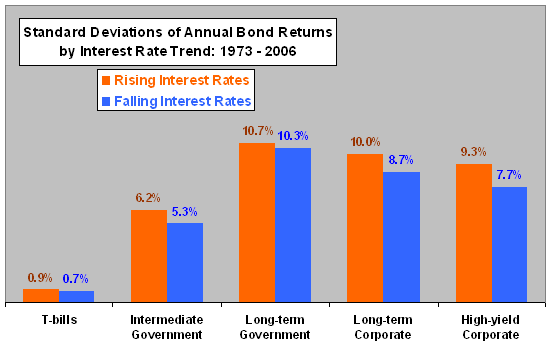Can investors anticipate long-term changes in the interest rate environment accurately enough to support active management of bond portfolios? In their September 2010 paper entitled “Gains from Active Bond Portfolio Management Strategies”, Naomi Boyd and Jeffrey Mercer investigate the effectiveness of using Federal Reserve policy signals for two types of bond allocation timing strategies: (1) increasing (decreasing) portfolio duration in anticipation of rate decreases (increases); and, (2) anticipating narrowing or widening of the yield spreads between categories of bonds with different credit ratings. They assume that a falling (rising) interest rate interval begins the month after an Federal Open Market Committee (FOMC) bank discount rate decrease (increase) that follows an increase (a decrease) and ends the month after the next discount rate increase (decrease). Using FOMC announcements and monthly total returns for U.S. 30-day Treasury Bill (T-bill), U.S. Intermediate-term Government Bond, U.S. Long-term Government Bond, U.S. Long-term Corporate Bond and Domestic High-yield Corporate Bond indexes spanning 1973-2006, they find that:
- Over the sample period, there are 14 changes in interest rate trend (known in real time, as defined).
- Applying each interest rate trend change at the beginning of the ensuing month, average returns for the three Treasury (two corporate) indexes are higher during rising (falling) rate phases. The annual return difference between phases for high-yield corporate bonds is a surprisingly large 9.56% (see the charts below).
- Strategies exploiting interest rate trend changes would have substantially enhanced net risk-adjusted returns compared to widely used fixed income benchmarks.
- Simple strategies allocating 100% of funds to one of two contrasting bond categories based on interest rate trend changes often outperform the benchmarks.
- However, an inception-to-date mean-variance optimization strategy tied to interest rate trend changes dominates these simple strategies.
The following charts, constructed from data in the paper, summarize average annual returns and standard deviations of annual returns for T-bills and four categories of government and corporate bonds over the entire 1973-2006 sample period. They show that these instruments behave differently during rising and falling interest rate environments as defined above, with the return difference for high-yield corporate bonds the most pronounced. These differences accommodate a variety of reallocation strategies tied to interest rate trend changes likely to outperform fixed income benchmarks.


In summary, evidence indicates that investors may be able to exploit interest rate trend changes derived from Federal Reserve policy pivots to boost net risk-adjusted returns from bond holdings.